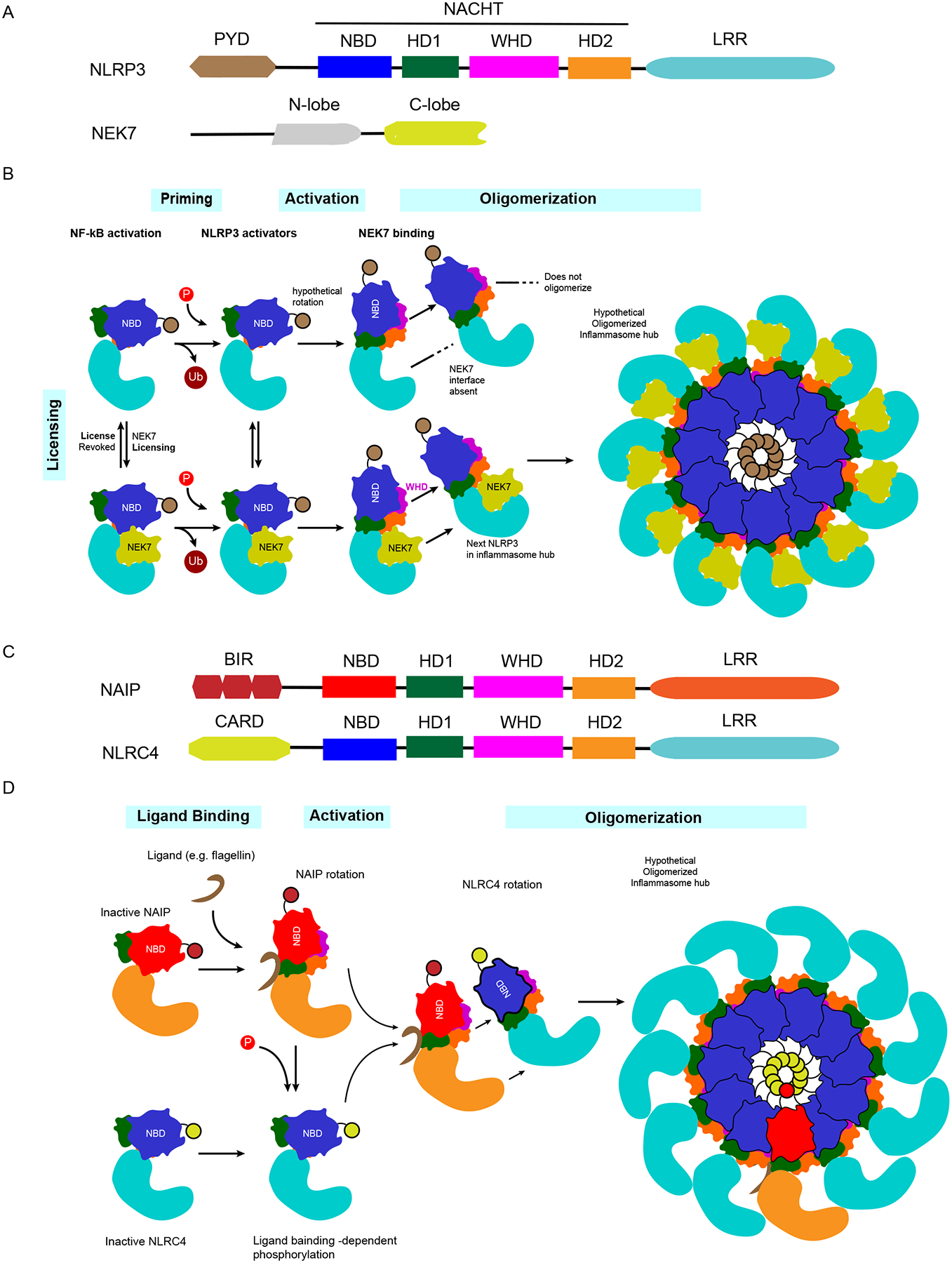Figure 2.

Regulation of NLRP3 and NLRC4 activation. NLRP3 activation requires three distinct stimulatory priming/licensing events, whereas NAIP/NLRC4 activation can proceed from exposure to a single activating agonist. (a) NLRP3 is composed of PYD, NACHT, and LRR domains. The NACHT domain includes four subdomains: NBD, HD1, WHD, and HD2. The licensing partner of NLRP3 is NEK7, which is composed of an N-lobe and a C-lobe. (b) NLRP3 activation requires three steps: priming, activation, and licensing. Under NF-κB signaling, the priming step occurs by multiple posttranslational modifications, whose structural functions and interdependence remain to be elucidated (e.g., deubiquitylation and phosphorylation). After priming, activation occurs by exposure to NLRP3 agonists, followed by (hypothetical) rotation of the NBD-HD1 module. Licensing requires NEK7, whose C-lobe connects two adjacent NLRP3 monomers to enable oligomerization into an inflammasome complex. (c) NAIPs and NLRC4 have closely related structures. Both include similar NACHT-LRR domains; however, NAIPs have BIR domains, while NLRC4 has a CARD in each N terminus. (d) Once bacterial ligands bind their cognate NAIP, the NAIP undergoes rotational activation, followed by NLRC4 phosphorylation by unknown mechanisms. The activated NAIP interacts with an NLRC4 monomer and induces NLRC4 rotational activation, which enables NLRC4 to oligomerize. Only 1 activated NAIP is required to recruit and activate 10 NLRC4 monomers and oligomerize in a domino-like reaction, resulting in the formation of an inflammasome disk complex. Abbreviations: CARD, caspase activation and recruitment domain; LRR, leucine-rich repeat; NAIP, NLR family apoptosis inhibitory protein; NEK7, NIMA-related kinase 7; NF-κB, nuclear factor κB; NLR, Nod-like receptor; NLRC4, NLR family CARD domain–containing 4; PYD, pyrin domain.
